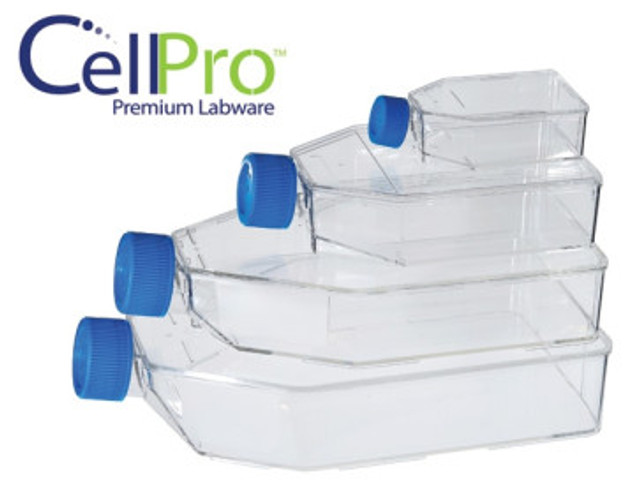When it comes to biological research, every detail matters. From the type of medium used to the techniques employed, each step can influence the outcome of an experiment. Among these, one aspect that is often overlooked is the type of cell growth flasks used. It may seem like a small detail, but selecting the right flask can significantly impact the success of your research. In this blog, we’ll explore why choosing the right cell or tissue growth flask is essential for your research and how it can affect everything from cell health to the reproducibility of results.
1. Cell Growth Flasks: More Than Just Containers
At first glance, a cell growth flask may seem like a simple container, a place where cells can grow. However, it is much more than that. Cell growth flasks serve as a microenvironment for your cells. It provides the space, the surface, and sometimes even the conditions needed for cells to thrive. The flask acts as a barrier between the cells and the outside environment, protecting them from contaminants and helping to maintain the correct pH, humidity, and gas exchange.
Different types of cells have different needs. Some require a surface to adhere to, while others grow in suspension. Some need a specific gas exchange ratio, while others need specialized coatings on the flask’s surface to mimic their natural environment. Choosing the wrong flask can compromise the growth and behavior of the cells, leading to inaccurate results.
2. Material Matters: Glass vs. Plastic
One of the first decisions researchers face when choosing among cell growth flasks is the material. Should you go with glass or plastic?
Glass flasks have been a staple in laboratories for decades. They are non-reactive, easy to sterilize, and durable. However, glass can be expensive, heavy, and prone to breaking. It’s also less versatile in terms of shapes and coatings, which limits its application in certain types of cell culture.
Plastic flasks, on the other hand, are lightweight, affordable, and versatile. They come in various shapes and sizes, and they can be coated with different substances to meet specific cell needs. However, not all plastics are created equal. Some may release chemicals over time, which could interfere with cell growth. Also, plastic cell growth flasks are often single-use, contributing to waste, and they may not be as resistant to heat and chemicals as glass.
Your choice between glass and plastic depends on the type of cells you’re working with, the nature of your experiment, and your budget. Each material has its pros and cons, and understanding them is key to making the right decision.
3. Surface Coating: Mimicking Natural Environments
Many cells require a specific type of surface to adhere to, and this is where surface coating becomes crucial. For adherent cells, the flask’s surface needs to mimic the cells’ natural environment to promote proper attachment and growth. A poorly chosen surface can lead to unhealthy, stressed, or even dead cells, which would invalidate your experiment.
Some cell growth flasks come pre-coated with substances like collagen, fibronectin, or poly-D-lysine, which provide a more natural environment for the cells. Other flasks allow you to customize the coating based on your research needs. Choosing the right surface coating ensures that your cells behave as they would in vivo, leading to more accurate and reproducible results.
4. Size and Shape: Adapting to Your Needs
Cell growth flasks come in various sizes and shapes, and choosing the right one depends on the scale and nature of your experiment. Smaller flasks are ideal for preliminary experiments or when working with a limited number of cells. Larger flasks are better suited for scaling up your research or when you need to produce large quantities of cells.
The shape of the flask also matters. Traditional flat-bottom flasks are commonly used, but sometimes a more specialized shape, like a spinner flask for suspension cultures or a multi-layer flask for high-density cultures, is required. Choosing the wrong size or shape can lead to uneven cell distribution, poor gas exchange, or inadequate space for cell proliferation.
5. Ventilation: Ensuring Proper Gas Exchange
Cells need a constant supply of gases like oxygen and carbon dioxide to grow and survive. The right flask should allow for adequate gas exchange while protecting the cells from contamination. This is where ventilation comes into play.
Some cell growth flasks have vented caps that allow gases to pass through while keeping contaminants out. Others rely on specialized gas-permeable membranes that provide controlled gas exchange without the need for vented caps. In experiments where precise gas conditions are required, such as hypoxia studies, choosing a flask with the correct ventilation properties is crucial.
6. Sterility and Contamination Control
Contamination can ruin any cell culture experiment. Even a small amount of bacteria, fungi, or other contaminants can destroy weeks of work. That’s why sterility is critical when choosing cell growth flasks.
Many flasks come pre-sterilized, which saves time and lowers the risk of contamination. Still, you must handle them properly to keep them sterile. Some flasks have angled necks and wide mouths. These features make handling easier and help prevent contamination during cell seeding or media changes.
It’s also important to check if the flask material works with your sterilization methods. For example, plastic flasks may not handle autoclaving, which is often used to sterilize glassware. Keeping your flask sterile throughout the experiment is vital for reliable results.
7. Reproducibility: The Key to Reliable Research
One of the primary goals of any scientific research is reproducibility. If your results cannot be reproduced by others, the validity of your research comes into question. The choice of cell growth flask can play a significant role in reproducibility.
Different cell growth flasks can lead to variations in cell behavior due to differences in surface coatings, gas exchange, or even the way the cells are distributed across the flask. Therefore, it’s essential to choose a flask that provides consistent and reliable conditions for your cells.
Standardizing the type of flask you use across experiments helps ensure that your results are reproducible. Documenting the specifics of the flask, including the brand, material, surface coating, and any other relevant details, allows other researchers to replicate your work accurately.
8. Cost vs. Quality: Finding the Balance
Finally, let’s talk about cost. Budget constraints are a reality in research and cell growth flasks can vary significantly in price. However, it’s essential to weigh the cost against the quality and suitability of the flask for your experiment.
Choosing the cheapest option may save money in the short term, but it could lead to compromised cell growth, contamination, or irreproducible results, all of which can be costly in the long run. On the other hand, investing in high-quality flasks that meet the specific needs of your cells can lead to better results.
When making your decision, consider both the upfront cost and the potential long-term impact on your research. Sometimes, spending a little more on the right flask can make all the difference in achieving successful outcomes.
Summary
In the grand scheme of biological research, choosing the right cell growth flasks may seem like a small decision. However, it can have a profound impact on your experiment’s success. From the material and surface coating to the size, shape, and ventilation, every aspect of the flask contributes to the microenvironment in which your cells grow.
By carefully considering your options and selecting the right flask for your specific needs, you can enhance the health and behavior of your cells, improve the reproducibility of your results, and ultimately contribute to more reliable and impactful research outcomes. In research, the details matter. Choosing the right cell growth flask is one of those details that can make all the difference.












